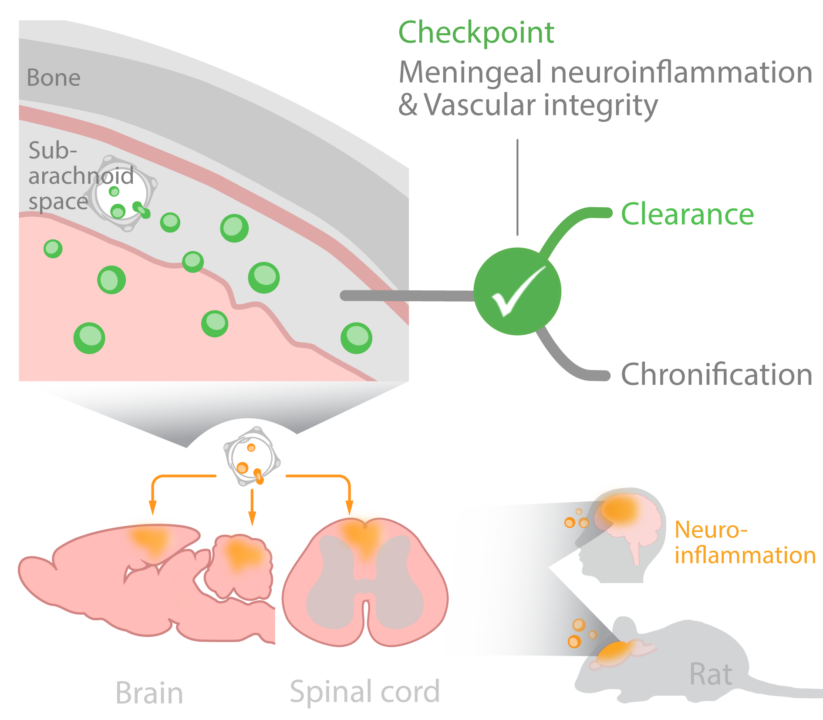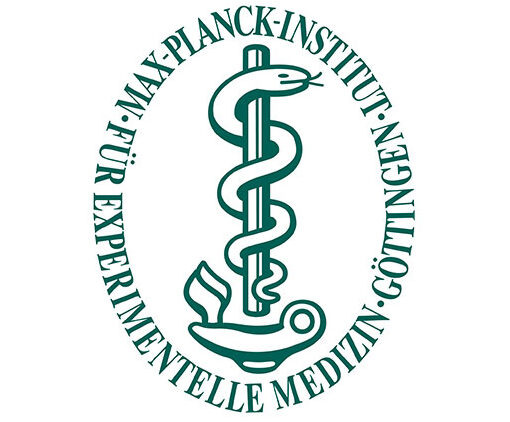Background: In multiple sclerosis and in its animal model, namely Experimental Autoimmune Encephalomyelitis (EAE), persistent leptomeningeal inflammation is present in the chronic phase of the disease.
Hypothesis: We hypothesize that repetitive CNS attacks by autoaggressive T cells convert the leptomeninges in a chronic inflammatory milieu preventing recovery of the CNS from the acute autoimmune damage.
Strategy: We will combine advance microscopy and in-depth cellular and molecular characterization in a relapsing-remitting model of EAE and in CNS samples from MS patients.

Summary
The meninges play an important role in autoimmune inflammation of the CNS. This is the place where the autoimmune process is set in motion and where it is decided whether the inflammation will take a chronic course with the resultant irreversible destruction and degeneration of the CNS tissue, or whether the inflammation will regress, and the nervous tissue can recover. The meninges consist of several clearly distinguishable layers, and in the first funding period of this consortium we investigated the contribution of the different layers of the meninges to autoimmune inflammation of the CNS. We were able to determine that the soft meninges (leptomeninges), especially the vascularized pia mater, act as an anatomical checkpoint in autoimmune inflammation. Here, a massive inflammation occurred, which preceded the autoimmune process and the clinical symptoms. Furthermore, a persistence of peripheral immune cells and inflammatory changes in the resident milieu (vessels and stroma) were also evident here in the case of a chronic disease. In contrast, the dura was almost completely excluded from the autoimmune process.
Building on these findings, we hypothesize that repetitive CNS attacks by autoaggressive T cells convert the leptomeninges in a chronic inflammatory milieu preventing recovery of the CNS from the acute autoimmune damage.
Therefore, in this next funding period we aim to define the cells and factors in the leptomeninges that influence the autoimmune process and the nervous tissue recovery. Through an integrative and multidisciplinary approach involving detailed genetics (gene expression profiling studies), imaging (intravital two-photon microscopy), functional analyses (targeted gene manipulation) and the examination of human autopsy tissue we want to find out which changes in Aim ❶ the leptomeningeal vessels, Aim ❷ the persistent immune infiltrate or the leptomeningeal stroma are responsible that the acute autoimmune inflammation does not regress. Aim ❸ The identified changes will be confirmed in human MS autopsy.
In perspective this project should reveal novel and potentially druggable cellular/molecular checkpoints within the leptomeningeal compartment which regulate the recovery of the nervous tissue from autoimmune CNS damage.





